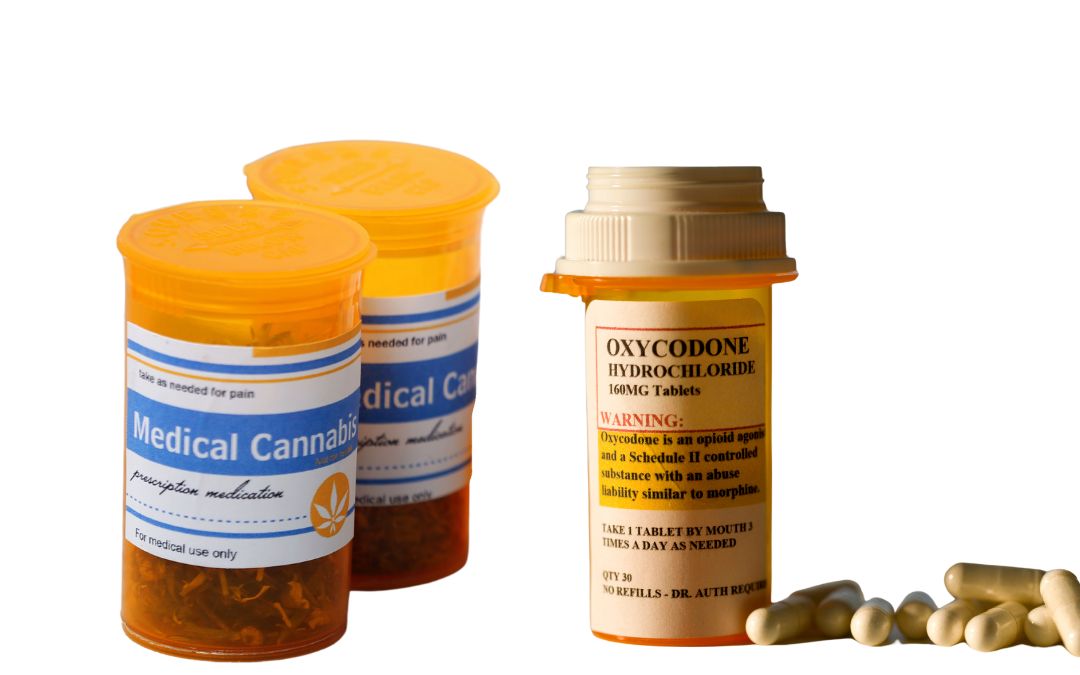In the ongoing debate about the best treatment for chronic pain, two main contenders often emerge: conventional painkillers and medical marijuana. As a Harvard physician and cannabis therapeutics specialist, I find it important to evaluate these options through a risk-benefit lens to discern which is better for each patient suffering from chronic pain.
Understanding Chronic Pain
Chronic pain is a complex and persistent condition that extends well beyond the normal healing time expected for an injury or illness. It can be associated with long-term illnesses such as diabetes and rheumatoid arthritis, profoundly affecting a patient’s quality of life. Effective management of this pain is crucial for maintaining functionality and overall well-being.
Conventional Painkillers for Chronic Pain
Conventional painkillers range from over-the-counter options like acetaminophen and NSAIDs like Ibuprofen to prescription opioids including oxycodone and morphine.
Benefits:
- Effectiveness: These medications can be highly effective in controlling pain, providing significant relief. They also have years of both scientific research and clinical experience behind them.
- Accessibility: These medications are widely available and commonly covered by insurance, making them accessible to most patients.
- Variability: The range allows for tailored treatments depending on the type and severity of pain.
Drawbacks:
- Adverse Effects: These medications can lead to gastrointestinal issues, liver damage, and other severe side effects.
- Addiction Risk: Opioids pose a significant risk of developing dependence and addiction, as we have seen recently with the advent of the widespread opioid crisis.
- Tolerance: Patients may develop tolerance, necessitating higher doses for the same pain relief, which increases the risk of overdose, dependence, and addiction.
Medical Marijuana for Chronic Pain
Medical marijuana uses components of the cannabis plant for treatment, either by inhalation or oral ingestion, and has been legalized in numerous regions for various medical conditions, including chronic pain.
Benefits:
- Effective for Wide Range of Pain: Cannabis has shown particular efficacy for neuropathic pain, as well as other types of pain (nociceptive, inflammatory). It appears to be as effective for mild to moderate pain as opioids.
- Lower Risk of Serious Side Effects: Compared to opioids, cannabis has a significantly lower risk of serious side effects and dependency.
- Opioid Reduction: Use of cannabis alongside opioid medication can lead to use of less opioid medication, which reduces the risks posed by those opioids.
- Broad Therapeutic Potential: Beyond pain relief, it can also improve associated symptoms like anxiety and insomnia.
Drawbacks:
- Psychoactive Effects: The main medication in cannabis, THC, has well-known psychoactive effects that can be uncomfortable for some patients.
- Dosing Challenges: The lack of standardization can make it difficult to establish optimal dosing, which is crucial for effective treatment.
- Dispensary Misinformation: Dispensaries are well known for giving incorrect and often sales-promoting medical advice leading to excess cost and delayed benefit to patients.
- Legal and Regulatory Issues: While cannabis is being moved to Schedule III shortly, this will not fully solve the complex legal status that make it difficult for patients to travel with their medication or get refills while away.
Comparative Analysis
Choosing between conventional painkillers and medical marijuana is influenced by the specific needs of the patient, including their particular pain characteristics, medical history, and personal treatment preferences.
For instance, patients with neuropathic pain might find more relief from medical marijuana, as conventional options may be inadequate and carry substantial side effects. Furthermore, many patients may need some of both, but again, will likely need significantly less of the opioids, which reduces their risk.
The significant risk of addiction and the potential for overdose with opioids is a grave concern that necessitates considering safer alternatives like medical marijuana. However, the challenge of lack of true prescription often leaves patients subject to the sales tactics of the dispensary and complicates the successful use of marijuana in the clinical setting.
Conclusion
Determining whether conventional painkillers or medical marijuana is better for managing chronic pain depends heavily on individual circumstances and often the best answer is some of each. This complexity and the risks associated with all of these medications requires the guidance of knowledgeable and caring physicians, and should be approached with a comprehensive understanding of the patient’s condition and needs.
Both treatment options have their places, but medical marijuana offers a promising alternative with fewer severe side effects – ultimately allowing for better patient care.
Consult with a Qualified Massachusetts Medical Marijuana Expert Today
Those considering using THC, CBD, or any type of medicine found in cannabis to help manage their condition should consider speaking to a trained medical expert who is knowledgeable about using cannabis therapeutically.
Massachusetts medical marijuana doctor Jordan Tishler, M.D. sits on the faculty of Harvard Medical School and has years of experience helping patients treat pain and other ailments using cannabis. He and the team at InhaleMD stand ready to assist patients in determining whether medical marijuana is right for them.
For more information, or to set up a virtual consultation with the team at InhaleMD, call us at (617) 477-8886 today.

